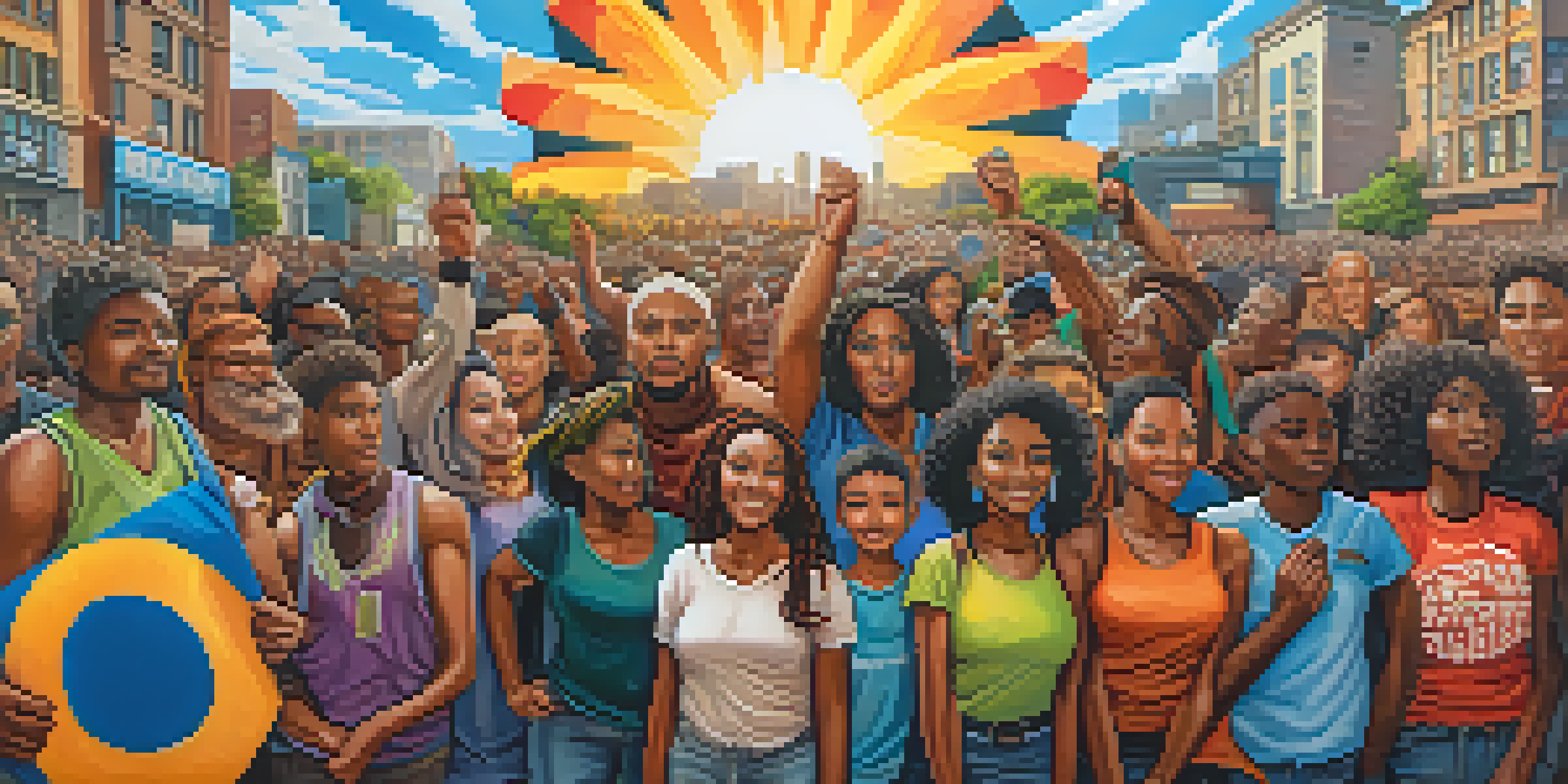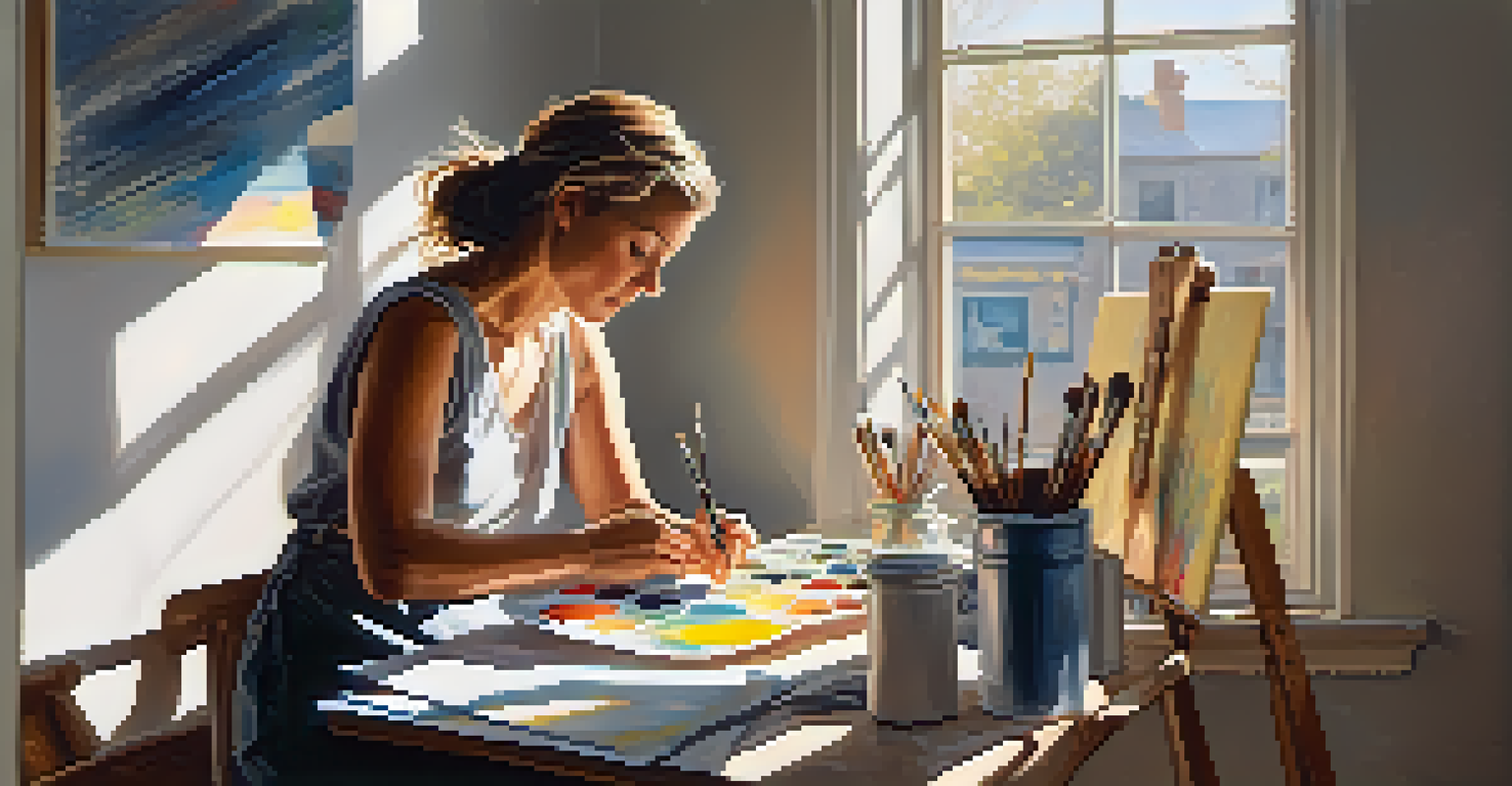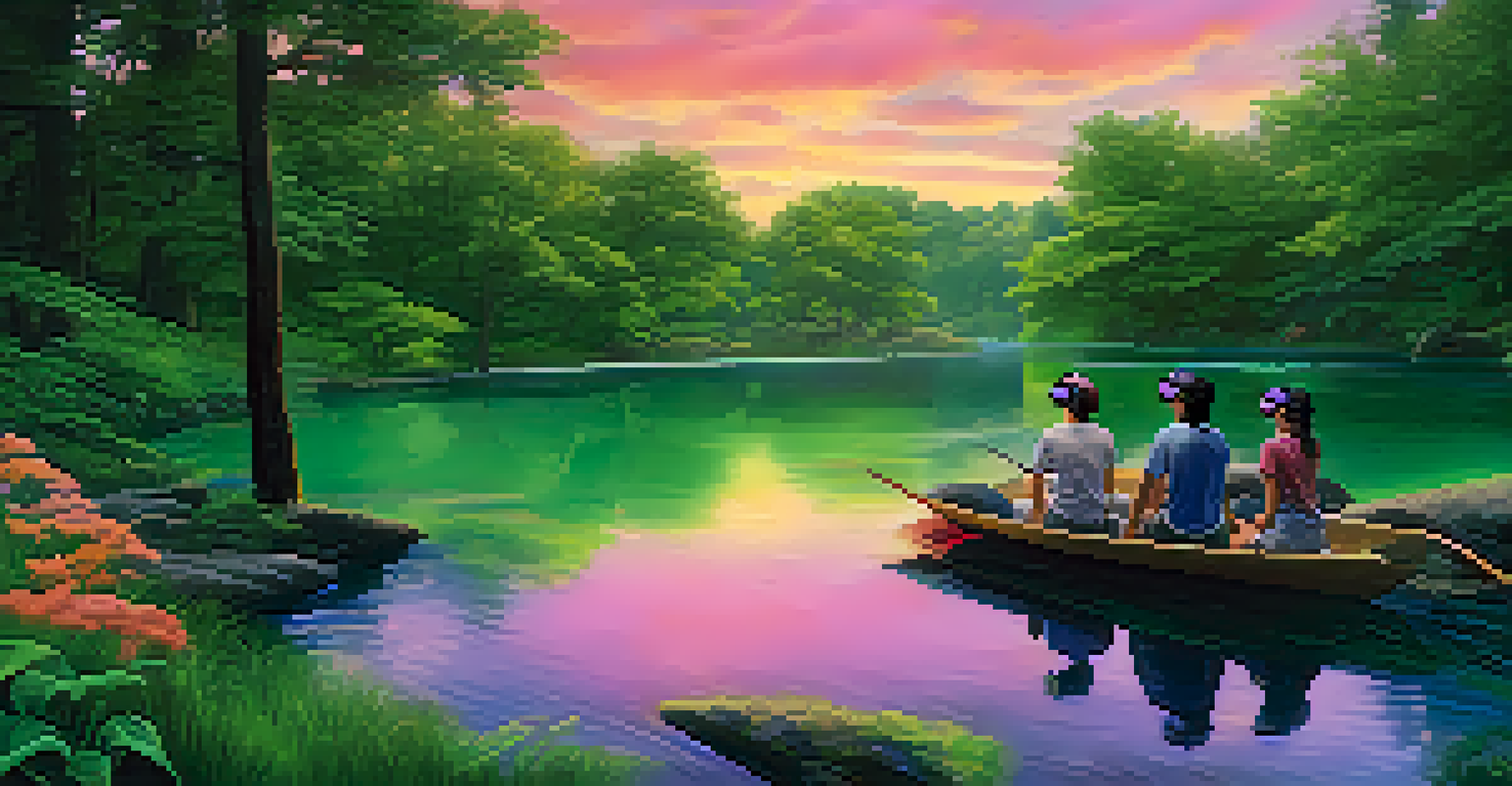Human Condition in Crisis: Art's Response to Turmoil

Understanding the Human Condition in Times of Crisis
The human condition encompasses the experiences, emotions, and struggles that define our existence. During times of crisis, whether it be social unrest, natural disasters, or pandemics, these experiences are magnified. The turmoil forces us to confront our vulnerabilities, fears, and ultimately, our resilience. This shared experience of crisis often becomes a rich source of inspiration for artists, who channel their emotions into their work.
Art is the most beautiful of all lies; it is the truth that is hidden behind those lies.
Art, in its many forms, serves as a mirror reflecting the chaos and uncertainty of the human experience. It captures the raw emotions of fear, anger, and sadness while also offering glimpses of hope and healing. For instance, during the COVID-19 pandemic, many artists created works that depicted isolation and longing, resonating deeply with audiences worldwide. This connection fosters a sense of community, reminding us that we are not alone in our struggles.
By exploring the human condition in crisis, we can gain insights into the collective psyche and the societal implications of turmoil. Artists, through their unique perspectives, often highlight the injustices and challenges faced by marginalized communities. In doing so, they not only document history but also inspire action and change, making art an essential part of our response to crisis.
Art as a Form of Protest and Resistance
Throughout history, art has played a crucial role in protest and social movements. From the powerful murals of the Chicano movement to the poignant photographs of civil rights activists, art has served as a voice for those who feel unheard. In times of crisis, artists often step forward to challenge the status quo, using their creativity as a means of resistance. This form of expression can galvanize communities and spark necessary conversations.

For example, during the Black Lives Matter movement, artists created striking visual pieces that addressed systemic racism and police brutality. These artworks not only raised awareness but also inspired a global dialogue about justice and equality. The emotional weight carried by these pieces is a testament to art's ability to stir the soul and provoke thought, making it a powerful tool for change.
Art Reflects Crisis and Resilience
During crises, art captures the heightened emotions and shared experiences of humanity, serving as a source of inspiration and community connection.
Moreover, art has the unique ability to transcend language and cultural barriers. A painting, a song, or a poem can communicate complex feelings and ideas that resonate with people from different backgrounds. In times of crisis, this universality becomes especially important, as it fosters solidarity and encourages collective action against oppression and injustice.
The Role of Art in Healing and Recovery
Art not only serves as a form of protest but also plays a vital role in healing during and after crises. Engaging with art—whether through creating or viewing—can provide a therapeutic outlet for individuals grappling with trauma. Many art therapists utilize creative expression to help people process their emotions and experiences, making art an integral part of recovery. This can be particularly beneficial in communities that have faced collective trauma.
In times of crisis, the only way to really cope is to create. Art is a means of survival.
For instance, during the aftermath of natural disasters, art programs are often implemented to help survivors express their grief and rebuild their lives. These creative initiatives can foster a sense of agency and empowerment, allowing individuals to reclaim their narratives. In this way, art becomes a crucial component of the healing journey, offering solace and a way to navigate the complexities of emotional pain.
Moreover, the communal aspect of art can enhance the healing process. When people come together to create or appreciate art, they forge connections that can lead to support networks. This shared experience can alleviate feelings of isolation, reminding individuals that they are part of a larger community. Ultimately, art not only reflects the struggles of the human condition but also serves as a beacon of hope during turbulent times.
The Evolution of Artistic Expression in Crisis
As crises unfold, the methods and mediums of artistic expression often evolve. In recent years, we have witnessed a surge in digital art forms as artists adapt to new realities, such as virtual galleries and social media platforms. This shift not only allows artists to reach wider audiences but also creates new opportunities for collaboration and innovation. The digital realm has become a vibrant space for artists to respond to current events in real-time.
Artists are now able to harness technology to create immersive experiences that engage viewers on multiple sensory levels. For example, augmented reality (AR) installations can transport audiences into the heart of a crisis, fostering empathy through visceral experiences. This evolution highlights the adaptability of art and its ability to resonate with contemporary audiences, even amidst turmoil.
Art as a Tool for Activism
Artists utilize their work to challenge societal injustices and provoke necessary conversations, making art a powerful medium for social change.
Furthermore, the urgency of crises often leads to spontaneous art movements. Take, for instance, the rise of street art during urban protests. Artists use public spaces to convey powerful messages quickly and accessibly. This immediacy not only amplifies the urgency of their messages but also democratizes art, making it an integral part of public discourse. As a result, the evolution of artistic expression reflects the dynamic nature of human resilience in the face of adversity.
The Intersection of Art and Activism
The intersection of art and activism is a potent space where creativity fuels social change. Artists are increasingly using their work to advocate for issues such as climate change, gender equality, and mental health awareness. This fusion of art and activism not only amplifies the message but also engages a broader audience, inviting them to participate in the cause. The emotional impact of art can motivate individuals to take action and join movements that resonate with them.
For instance, the climate strike movement has seen artists creating compelling visuals that highlight the urgency of environmental issues. These artworks often go viral, spreading awareness far beyond traditional activist circles. By harnessing the power of art, activists can communicate complex ideas in a relatable and engaging manner, making the issues more accessible to the public.
Moreover, art can serve as a unifying force in activist movements. Collaborative projects, such as community murals or collective performances, foster a sense of belonging and shared purpose. This communal aspect of art strengthens social bonds and encourages participants to work together towards a common goal. In this way, the intersection of art and activism becomes a catalyst for change, inspiring individuals to envision and create a better future.
The Global Impact of Crisis on Artistic Movements
Crisis does not only affect individuals; it reverberates across entire cultures and societies, shaping artistic movements worldwide. Different regions respond to crises in their unique ways, often resulting in rich, diverse expressions of the human experience. For example, the Syrian civil war has inspired a wave of art that captures the struggles of displaced individuals, highlighting the global refugee crisis. This art serves as a powerful reminder of the shared humanity that transcends borders.
Furthermore, global crises like the COVID-19 pandemic have united artists across continents. Virtual exhibitions and collaborative projects have emerged, showcasing how creativity thrives even in isolation. These global movements emphasize solidarity and resilience, reminding us that art can bridge gaps and foster understanding among diverse communities. The interconnectedness of our world is reflected in the way art responds to shared challenges.
Healing Through Artistic Expression
Engaging with art provides therapeutic benefits, helping individuals and communities process trauma and foster connections in times of crisis.
Ultimately, the global impact of crisis on artistic movements highlights the universality of the human condition. Artists from different backgrounds and experiences come together to explore themes of loss, hope, and recovery. This collective exploration enriches the global narrative, illustrating how art can serve as both a reflection of our struggles and a source of inspiration for future generations.
Looking Ahead: The Future of Art in Times of Crisis
As we navigate an increasingly unpredictable world, the role of art in response to crisis will continue to evolve. The rise of technology and digital platforms will undoubtedly shape how artists engage with audiences and respond to current events. We may see even more innovative uses of virtual reality, interactive installations, and multimedia storytelling as artists seek to connect with viewers in meaningful ways. The future of art will likely be characterized by its adaptability and responsiveness to the human experience.
Moreover, as society grapples with ongoing issues such as climate change, inequality, and mental health, artists will play a crucial role in raising awareness and inspiring action. Their unique perspectives will be essential in shaping public discourse and encouraging collective reflection. Art will remain a powerful vehicle for social change, challenging us to confront uncomfortable truths and envision a better future.

In conclusion, the human condition in crisis will continue to inspire artistic expression, bridging the gap between individual experiences and collective struggles. As we move forward, it is vital to support and uplift artists, recognizing their contributions as vital to our understanding of the world around us. The resilience of the human spirit, as encapsulated through art, will guide us through turmoil and remind us of our shared humanity.